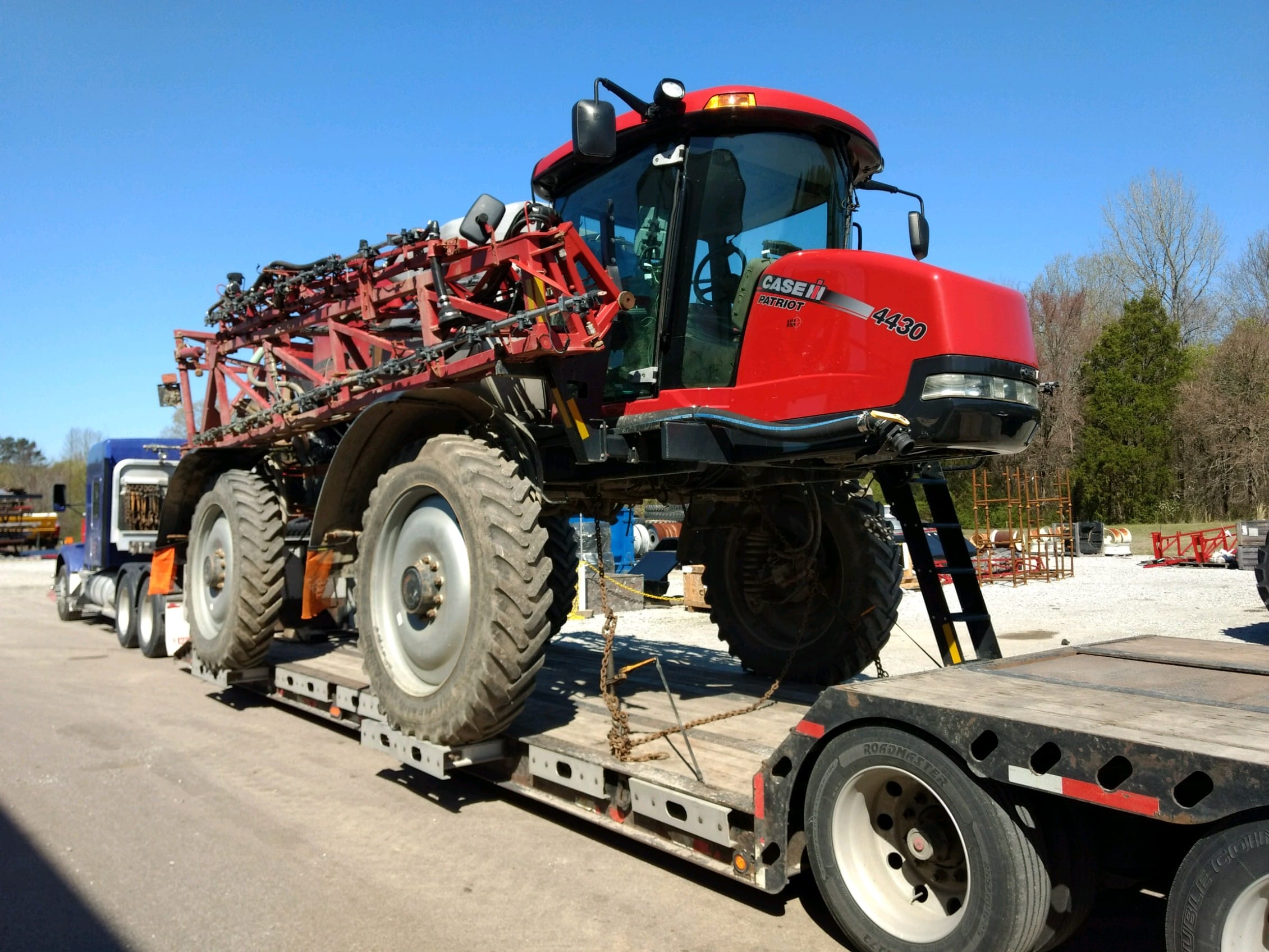
Selecting the proper trailer is your first step to a successful farm-equipment haul. You need to decide whether your valuable piece of equipment should ship aboard a flatbed trailer, a step-deck trailer or a Removable Gooseneck (RGN) trailer.
Flatbed trailers work well for equipment less than 8-½ feet tall. Step-deck trailers offer increased clearance and drive-aboard access. RGN trailers provide transportation for oversize or unwieldy items.
Equipment that comes in different sizes employs all three types of transport. Tractors, for instance, ship aboard all three types of trailer, depending upon the dimensions of the machine. Choose the proper type of trailer to haul your farm equipment and you’re on your way to transport success.
Transporting Farm Machinery
Most larger pieces of farm machinery require an RGN trailer for transportation. The largest pieces of self-propelled equipment, such as combines, cotton pickers and harvesters, travel as oversize loads.
Trailer suggestions for shipping farm machinery includes:
- Tractors: (flatbed, step deck, RGN) Match the horsepower to the trailer. Low-horsepower tractors travel on flatbeds, high-horsepower tractors ride aboard step-deck trailers or RGN trailers.
- Harvesters: (flatbed, RGN) Walk-behind harvesters ship aboard flatbed trailers. Large field harvesters need the added clearance and heft of an RGN trailer.
- Loaders: (step deck, RGN) Self-propelled loaders travel on step-deck trailers or RGN trailers, so they can be driven aboard. RGN trailers handle taller and heavier models.
- Combines: (RGN) Combines travel aboard RGN trailers with outriggers, trailer attachments that fold out to support the wheels of the machines. You’ll need permits.
- Cotton Pickers: (RGN) Like combines, cotton pickers require specialized RGN trailers that can handle their bulk. You might need a multi-axle RGN trailer.
Shipping Farm Field Equipment
Farm field equipment comes in all shapes and sizes. Pieces pulled by low-horsepower tractors usually travel aboard flatbed trailers. Larger pieces often require RGN trailers, which offer more clearance room than step-deck trailers.
Trailer suggestions for hauling farm equipment includes:
- Plows: (flatbed, step deck, RGN) Walk-behind plows travel safely on flatbed trailers. Smaller self-propelled plows require step-deck trailers, unless you have access to a dock.
- Spreaders: (flatbed, step deck, RGN) Like plows, walk-behind spreaders ride on flatbed trailers. Self-propelled spreaders are large enough that you’ll want to drive them aboard trailers.
- Wagons and Carts: (flatbed, step deck, RGN) Smaller wagons and carts can travel safely on flatbed trailers. Big carts, like those that handle grain or liquid manure, ship on RGNs trailers.
- Seeders: (step deck, RGN) Seeders have long booms that fold in, but they’re still too large for flatbed trailers. Height can be more of a problem than length.
- Cultivators: (step-deck, RGN) Everything depends upon how your cultivator folds up. Some pieces travel with the arms pointing toward the sky, which means using an RGN trailer.
- Sprayers: (RGN) Most sprayers are large, self-propelled machines that challenge height limits. You might have to transport the sprayer booms separately from the tractors.
Hauling Hay Equipment
Hay equipment is unwieldy to transport. The arms on many of the pieces of equipment fold in toward the tow hitch for travel. While this shortens their length, it often makes them too tall for flatbed trailer transport.
Trailer suggestions for transporting hay equipment:
- Balers: (flatbed, step deck, RGN) Small balers less than 8 ½ feet tall can travel on a flatbed. Most balers fit nicely on the upper deck of a step-deck trailer, travelling as a partial load.
- Mowers: (flatbed, step deck) Small mowers fit on flatbed trailers, while larger mowers need step-deck trailers for transport. Height is the issue, plus the ability to drive aboard.
- Swathers: (flatbed, RGN) Most pull-type swathers fit on flatbed trailers. Self-propelled swathers travel aboard RGN trailers, sometimes with the housing disconnected from the thresher.
- Tedders: (flatbed, RGN) Small pull-type tedders fit on flatbed trailers. Larger tedders travel with the booms folded inward and pointing to the sky, requiring an RGN trailer for transport.
- Hay Rakes: (RGN) Smaller hay rakes fit on flatbed trailers. Larger hay rakes, which are hard to load, fold up for transport.
You’ll need to weigh the increased costs of an RGN trailer versus the need for added capacity. If your equipment fits on a flatbed trailer – and you can load it – you’ll save money. Likewise, step-deck trailers are cheaper to use than RGN trailers. Ask your transportation representative to help you decide.